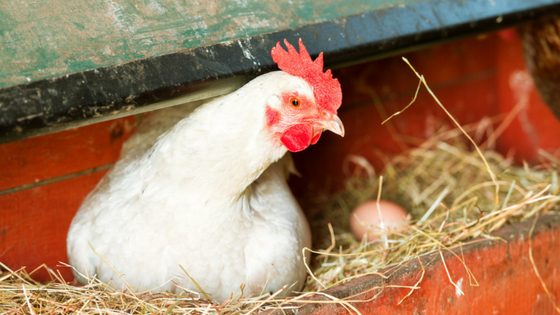Spring never seemed to arrive this April throughout the Midwest. Waves of snowstorms and cold swept across vast areas of the American heartland, but finally toward the end of the month warmer weather eased in.
Warm spring weather means it’s time to do a thorough coop cleaning. The tasks are messy and completing them makes the coop a comfortable home for the flock as warm weather arrives and a pleasant place for folks to visit. So, don your old clothes, put on work shoes, and slip on gloves and get that coop spruced up.

LITTER: Grab a snow shovel or grain scoop and dig several inches of litter from the coop. Usually it’s dried chicken manure mixed with wood chips. Hens give their caretakers more than fresh eggs. Their manure is a garden gift. Fresh out of the coop litter can be thinly spread on the vegetable or flower garden soil and lightly worked into the earth. Chicken manure has a high nitrogen content. It’s potent, so only a thin layer is needed to improve soil nutrition. Too much can cause problems. Even a small amount of litter worked into the ground energizes vegetables and plenty of squash, tomatoes, beans, chard, and lettuce benefit from the nearby chickens. So do the fortunate people who enjoy garden fresh food all summer.
Replace the scooped-out litter with a fresh coating of pine chips. Keep the coop dry and the litter will be fine until it’s removed during the annual fall coop cleanout.
WINDOWS: Chickens don’t like January’s frigid drafts, so they appreciate closed windows. That changes as the weather warms. On balmy nights hens appreciate a cool breeze, so wash the windows to let as much light as possible in and open them for the season. Be sure open windows are covered with both mosquito netting to keep out biting bugs and heavy-duty wire mesh to discourage raccoons and other predators with nocturnal cravings for a chicken dinner.
DUST: Chickens and dust seem to belong together. Left alone, a thick layer of dust settles on any horizontal surface and also cakes netting. An easy way to dust the coop is to open windows and doors on a breezy day and use a cordless battery powered vacuum with the hose set on “blower” mode. Chicken created dust blows away almost instantly in the rush of vacuum cleaner air, and the natural breeze carries it outside the building. Be sure to wear ear protection to neutralize the harmful effects of the noisy machine.
WATERERS: Spring is the best time to remove and clean any plug-in waterers that keep water ice free during frigid weather. Cover them so you don’t have to re-clean them come fall. Put them away until autumn. Replace them with clean waterers. Chickens drink often during warm weather so it’s a good idea to have redundant waterers. In other words, don’t have just one waterer in the coop. Put out a couple.
A bucket of cool water can also be put in the run for thirsty birds.
NESTS: Spring is a great time to clean out the bottoms of nest boxes and replace the old straw or wood chips with fresh, new, soft material to cushion eggs and keep them clean.
LIGHTS: Hens lay the most eggs when they get 14 to 15 hours of light every day. By late spring there’s enough natural daylight streaming in through windows that there’s no need for supplemental lighting. Unplug lights and timers to save electricity. Clean them off, cover them so they do not collect summertime dust, and store them.
Remember to have fun, too! After this dusty task is done chickens and people feel better. A warm spring day is a perfect time to pull out a lawn chair, grab a cup of hot coffee or a cool beverage and just sit watching the hens as they scour the run for any hapless insect that wanders in. Spring’s a delightful season for both chickens and people.